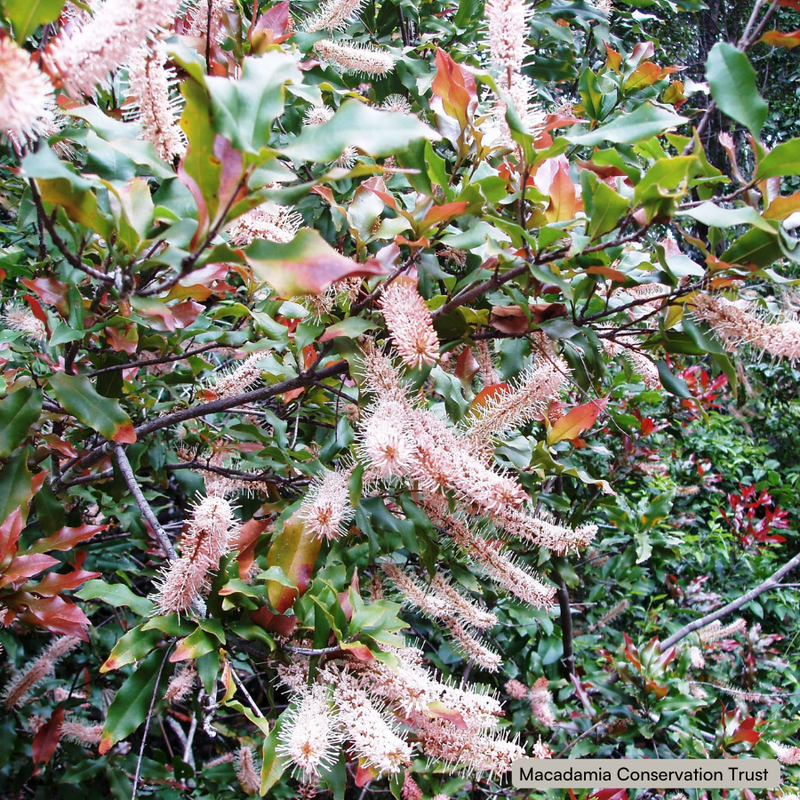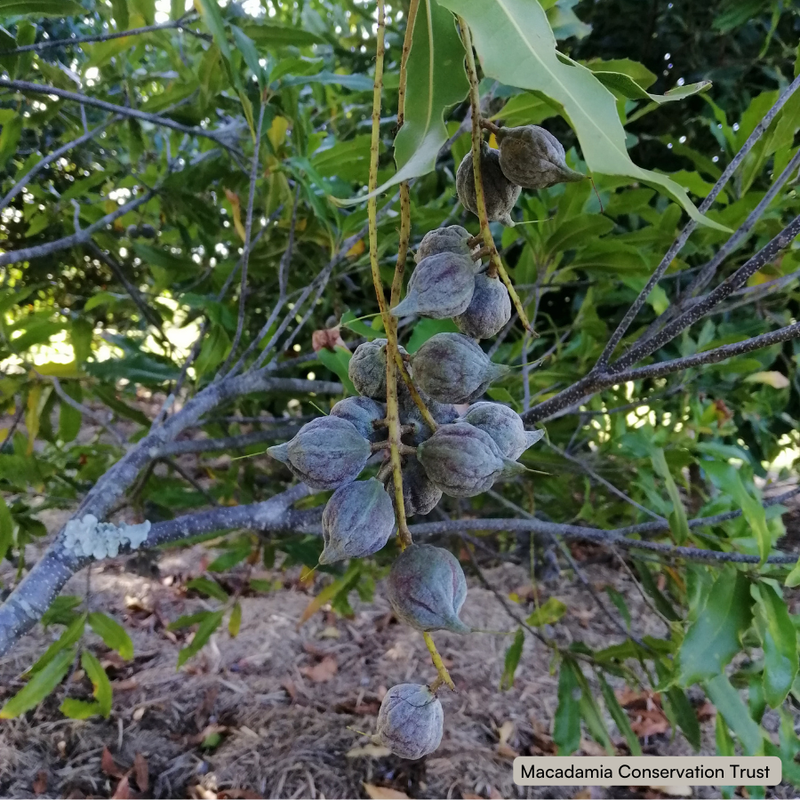All macadamias come from Australia. Two of the four species produce the delicious nuts eaten by First Nations people and now grown as a commercial crop. Macadamia was one of the first Australian plant species to become a global industry.
The natural range of macadamias extends between northern New South Wales and Southeast Queensland. Macadamia ternifolia is sometimes called ‘Maroochy nut’ or ‘Gympie nut’ and is only found north of Brisbane to Gympie in remnant rainforest.
Trees seldom grow higher than about 8m and may have single or multiple trunks. Glossy leaves with serrated edges grow in clusters of three at each node. Young leaves are a rich pinkish-red making a splash of colour in the forest.
In spring, long creamy-pink flowers appear. Every brush-like flower is made up of hundreds of individual flowers arranged along a stem – each with the potential to grow into a nut if pollinated. However, not many flowers are produced in the shade of the rainforest canopy. The flowers are pollinated by native bees, hover flies, other insects and possibly micro-bats.
The nuts of Macadamia ternifolia are small and very bitter, unlike the commercially grown species. While the nuts are toxic to humans they are sought out by bush rats who help disperse the seeds.
Macadamia ternifolia is listed as ‘vulnerable’ as very few remain in the wild. Monitoring invasive species and preventing further clearing of lowland rainforest is vital for its survival.
This information has been developed in conjunction with the Macadamia Conservation Trust. You can find out more about Macadamias on their website.



